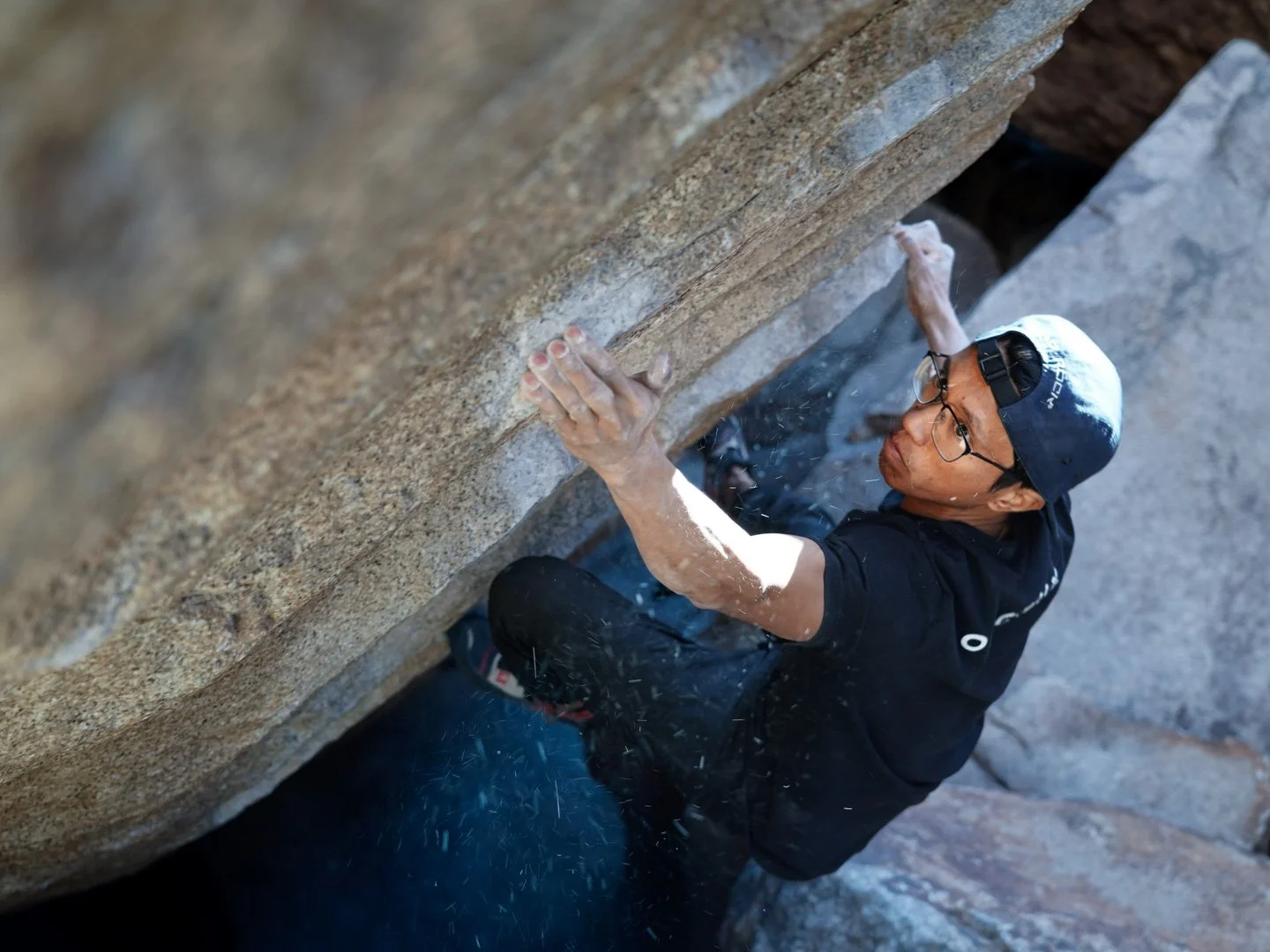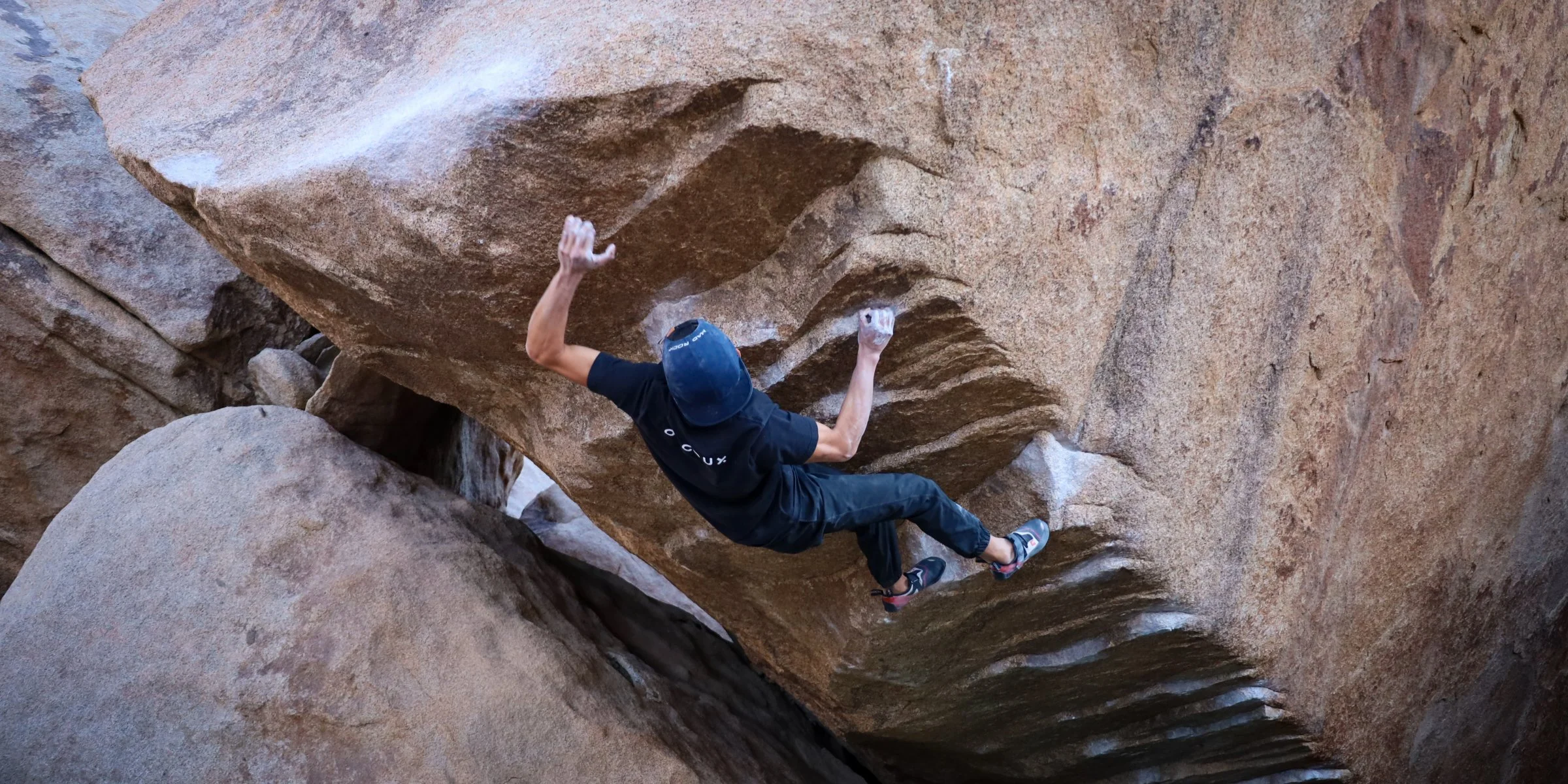Rail Shark: The soon-to-be classic of elite Joshua Tree bouldering
by Matt Levy and Katherine Ku
If you’re a regular consumer of climbing media, you may have heard an interesting problem name pop up more and more frequently in the last few months: Rail Shark.
So who or what is a Rail Shark? If you ask FA Jeremy Schoenborn, the answer is quite simple. Rail Shark is a soon-to-be classic bloc that is “second to none in Joshua Tree.”
Schoenborn immediately saw potential in the overhanging face with blocky rails lining the underside, saying it was “certainly climbable” but that he “seriously doubted it was any easier than V14.” So Schoenborn got to work cleaning and projecting. By the end of last year's winter season, Schoenborn had snagged the FA, setting the stage for a second ascent by Joe Maier, a third by Jordan Mathew, and a fourth by none other than Ethan Pringle, who famously flashed the “ultra-classic Moonlight Buttress.” Jeremy Schoenborn is not the only boulderer on the Joshua Tree circuit to give high praise to Rail Shark.
Despite the unseasonably warm weather in December and hardly adequate crashpad coverage, Mathew was able to put down the boulder on his first Joshua Tree trip of the season. He was impressed by the bloc, saying that Rail Shark had “everything [he] looks for in a rock climb”— “committing,” “proud,” and “full-value from start to finish, all the way to the mantle.” It’s not everyday you run into a boulder that earns its full five stars in both movement and aesthetics.
Just before Christmas, Pringle hiked out to Rail Shark with his crew and found that the boulder wouldn’t go down as easily as he hoped. After figuring out the tricky crux sequence and a battle with sweaty hands, he was surprised to finish off the boulder with “one hail-mary effort from the sit start.” Pringle, too, praised Rail Shark, calling it an “epic find” and “as mega as they come.” In our conversation with him, he confirmed that it was a “true standout,” calling Schoenborn’s discovery a “world class-contribution.”
My team and I drove out to the desert, cameras and crag snacks in tow. We weaved our way through the talus field and squeezed bodies and pads through little tunnels in the formation, moving upward to find this new boulder everybody was talking about. Before long, we all had the same question— how the hell did Jeremy find this thing?
To hear Schoenborn tell it, he had been at the top of the famous sport line “New World Order” when he looked down into the talus field and saw several boulders he wanted to check up on. “One boulder led to the next and the Rail Shark appeared as soon as I turned the right corner.” And it’s true. As one approaches the Shark, every other formation falls away and leaves you staring, entranced, into Rail Shark’s great, dark maw. Mercene described his first time finding the Shark, saying “It’s rad when you come out of the talus and The Shark appears. It was like back in the day when you play Pokémon on your Gameboy and the rare Pokémon finally comes up.”
But just how rare a creature is Rail Shark?
Joshua Tree is among the most heavily trafficked bouldering spots in Southern California, and more often than not you’ll find droves of climbers gathered around classic lines put up starting in the 60s. Though there are over 1,200 established and recorded problems, climbers like Mathew see Rail Shark as a reminder of the “vast potential” of Joshua Tree. Five-stars lines are still out there - “you just have to be willing to hunt for them.” Just take a cue from Jeremy Schoenborn, who knows that even in our very own roarin’ ‘20s, the next area classic could be just an adventurous scramble away.




